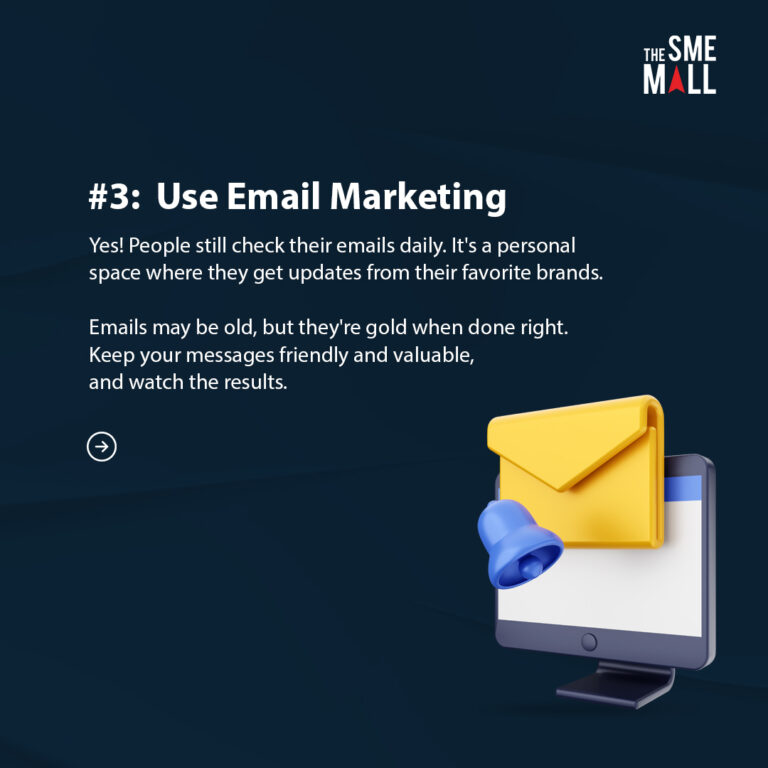Sales Prospecting Secrets: How to Build a Pipeline That Never Runs Dry
Sales Prospecting Secrets: How to Build a Pipeline That Never Runs Dry
Imagine having a systematic approach to finding customers who are genuinely interested in what you offer. No more random outreach hoping someone will respond. No more wasting time on prospects who will never buy. Just a predictable flow of potential customers who actually need what you’re selling.
This isn’t a fantasy, it’s what happens when you master sales prospecting. Yet most Nigerian businesses struggle with this critical skill, often confusing busy work with productive prospecting. They make calls, send emails, and attend networking events but see little return on their efforts because they lack a systematic approach.
Here’s the truth: Effective prospecting isn’t about working harder, it’s about working smarter. Companies with effective prospecting processes generate 50% more sales-ready leads at 33% lower cost, proving that the right approach transforms your entire sales operation.
Ready to discover what sales prospecting really means and how to do it right? Let’s dive into the strategies that separate successful businesses from those still struggling to find their next customer.
What is Prospecting? Understanding the Foundation of Sales Success
What does sales prospecting mean? Sales prospecting is the systematic process of identifying, researching, and reaching out to potential customers who fit your ideal customer profile. It’s the proactive activity that fills your sales pipeline with qualified leads before they even know they need your solution.
Think of prospecting as detective work combined with relationship building. You’re looking for clues that indicate a person or business might benefit from what you offer, then initiating conversations to explore that potential.
The primary role of prospects in sales is to provide your business with a steady stream of potential customers who can be nurtured into paying clients. Without prospecting, businesses rely entirely on inbound leads, which may not be sufficient for consistent growth.
What is an example of a sales prospect? Consider a Nigerian software company selling inventory management solutions. A sales prospect might be a growing retail chain in Lagos that recently expanded to three new locations. This prospect shows clear signs they might need better inventory tracking across multiple locations, making them an ideal candidate for outreach.
Methods of Prospecting: How Modern Businesses Find Their Best Customers
Traditional Prospecting Methods
Cold Calling: Direct phone outreach to potential prospects Email Outreach: Personalized email campaigns to targeted contacts
Networking Events: Industry conferences, trade shows, and business meetups Referrals: Leveraging existing customers and contacts for introductions Door-to-Door: Physical visits to potential business customers
Modern Digital Prospecting Methods
Social Media Prospecting: Using LinkedIn, Twitter, and Facebook to identify and connect with prospects Content Marketing: Creating valuable content that attracts potential customers SEO and Search Marketing: Optimizing for search terms your prospects use Webinars and Online Events: Hosting educational sessions to attract prospects Video Prospecting: Personalized video messages for outreach
Advanced Prospecting Techniques
Effective sales prospecting techniques help sales reps focus on high-potential leads who are more likely to make a purchase. These include:
Account-Based Prospecting: Targeting specific high-value accounts with customized approaches Intent Data Prospecting: Using behavioral signals to identify prospects actively researching solutions Social Selling: Building relationships through social media before making sales pitches Trigger-Based Prospecting: Reaching out based on specific events like funding announcements or leadership changes
Sales Prospecting vs Lead Generation: Understanding the Critical Difference
Many business owners ask about sales prospecting vs lead generation because these terms are often used interchangeably, but they represent different approaches:
Lead Generation:
Lead generation is about attracting potential customers through marketing efforts
Inbound focused, prospects come to you
Marketing-driven activities (content, ads, SEO)
Generates interest and awareness
Creates a pool of potential prospects
Sales Prospecting:
Prospecting is all about finding potential customers who fit your target market through direct outreach
Outbound focused, you go to prospects
Sales-driven activities (calls, emails, meetings)
Qualifies and converts interest into sales opportunities
Directly engages specific individuals
When sales and marketing align their activities around shared messaging and goals, that is when revenue growth accelerates. Both prospecting and lead generation work together to create a comprehensive customer acquisition system.
Five Importance of Prospecting in Sales
Understanding the importance of prospecting in sales helps justify the time and resources invested in these activities:
1. Pipeline Predictability
Consistent prospecting creates a predictable flow of opportunities, allowing better sales forecasting and resource planning. Without active prospecting, your pipeline depends entirely on unpredictable inbound leads.
2. Revenue Growth Control
By engaging in prospecting, businesses can expand their customer base, increase revenue, and build brand awareness. Prospecting puts revenue growth under your control rather than leaving it to chance.
3. Market Expansion
Prospecting helps you reach new market segments, geographic areas, or customer types that might never find you through traditional marketing channels.
4. Competitive Advantage
Active prospecting allows you to reach prospects before competitors, giving you first-mover advantage in building relationships and understanding needs.
5. Sales Team Development
Regular prospecting activities improve sales skills, market knowledge, and customer understanding across your entire sales team.
What are the Benefits of Prospects? Why Quality Prospects Transform Your Business
What are the benefits of prospects beyond just potential sales? Quality prospects provide multiple advantages:
Shorter Sales Cycles: Well-qualified prospects move through your sales process faster because they already have a defined need and budget.
Higher Conversion Rates: Contacting leads within the first hour increases the likelihood of conversion by 7 times, showing how timing and prospect quality impact results.
Better Customer Relationships: Prospects you’ve researched and approached thoughtfully are more likely to become long-term, satisfied customers.
Improved Sales Efficiency: Focusing on qualified prospects means less time wasted on unqualified leads and more time on revenue-generating activities.
Market Intelligence: The prospecting process provides valuable insights about market needs, competitor activities, and industry trends.
Why is Prospecting so Challenging in Sales? Common Obstacles and Solutions
Why is prospecting so challenging in sales? Several factors make prospecting difficult:
Challenge 1: Rejection and Mental Resistance
The Problem: Not every lead is sure to qualify as a prospect. It can be difficult to find prospects who genuinely need your product or service.
The Solution: Focus on research and qualification before outreach. Understand prospect pain points and customize your approach accordingly.
Challenge 2: Finding the Right Prospects
The Problem: Identifying prospects who have both the need and authority to make purchasing decisions.
The Solution: Develop detailed ideal customer profiles and buyer personas. Use sales prospecting tools to filter and identify better-qualified prospects.
Challenge 3: Getting Past Gatekeepers
The Problem: Reaching decision-makers in larger organizations often requires getting past assistants and other gatekeepers.
The Solution: Build relationships with gatekeepers, provide value upfront, and use multiple contact methods (phone, email, LinkedIn, etc.).
Challenge 4: Standing Out from Competitors
The Problem: Prospects receive multiple sales approaches daily, making it hard to get attention.
The Solution: Personalize outreach with specific insights about their business, industry trends, or recent company news.
Sales Prospecting Tools: Technology That Amplifies Your Efforts
Modern sales prospecting tools dramatically improve efficiency and effectiveness:
CRM and Contact Management
Salesforce, HubSpot, or Pipedrive for managing prospect data
Automated follow-up sequences and reminder systems
Integration with email and phone systems
Research and Data Tools
LinkedIn Sales Navigator for professional prospect research
ZoomInfo or Apollo for contact information and company insights
Industry databases and directories
Outreach and Communication Tools
Outreach.io or SalesLoft for email sequence automation
Vidyard or Loom for video prospecting
CallRail or similar tools for phone tracking and recording
Social Media Prospecting Tools
Hootsuite or Buffer for social media management
Social listening tools for identifying prospect needs
LinkedIn automation tools (used carefully and compliantly)
Sales Prospecting Examples: What Success Looks Like in Practice
Sales prospecting examples help illustrate effective approaches:
Example 1: B2B Software Company
Prospect: Growing e-commerce business expanding into new markets Research: Company recently announced ₦50M funding round and plans to double their product catalog Approach: “Congratulations on your recent funding! As you expand your product range, I imagine inventory management across multiple channels becomes complex. We’ve helped similar e-commerce companies reduce inventory errors by 40% during expansion phases. Would you be interested in a brief conversation about your current challenges?”
Example 2: Professional Services Firm
Prospect: Manufacturing company with new environmental compliance requirements Research: Recent regulatory changes affect their industry Approach: “I noticed the new environmental regulations taking effect next month will impact manufacturing operations. We’ve helped three companies in your sector successfully navigate these compliance requirements while maintaining operational efficiency. I’d love to share what we learned that might benefit your team.”
Example 3: Local Service Business
Prospect: New restaurant opening in the area Research: Construction permits show opening timeline Approach: In-person visit with a welcome gift and information about local business services they might need as they prepare for opening.
Importance of Prospecting in Network Marketing: Building Relationship-Based Sales
Importance of prospecting in network marketing centers on relationship building rather than traditional sales approaches:
Personal Connection: Network marketing prospecting focuses on identifying people within your personal and professional network who might benefit from your products or opportunity.
Trust-Based Selling: Success depends on leveraging existing relationships and building new ones based on trust and value.
Referral Generation: Each prospect can become a source of additional prospects through referrals and network connections.
Long-Term Relationship Building: Network marketing prospecting emphasizes building lasting relationships that generate ongoing business rather than one-time transactions.
Building Your Sales Prospecting System
Creating an effective prospecting system requires structured processes:
Step 1: Define Your Ideal Customer Profile
Identify the characteristics of your best customers:
Industry and company size
Geographic location
Annual revenue range
Common challenges your solution addresses
Typical decision-making process
Step 2: Develop Prospect Research Processes
Create systematic approaches for gathering prospect information:
Company background and recent news
Industry trends affecting them
Key decision-makers and influencers
Current solutions they might be using
Potential trigger events for purchasing
Step 3: Create Outreach Templates and Scripts
Develop customizable templates for different scenarios:
Initial outreach messages
Follow-up sequences
Phone call scripts
Social media connection requests
Meeting request templates
Step 4: Establish Activity Metrics and Goals
Set measurable targets for prospecting activities:
Number of prospects researched daily
Outreach attempts per week
Response rates by channel
Meetings scheduled per month
Pipeline opportunities generated
How The SME Mall Accelerates Your Prospecting Success
Effective prospecting requires both strategy and execution support. Many Nigerian businesses struggle with prospecting because they lack the systems, tools, and expertise needed for consistent results.
At The SME Mall, we help businesses build and execute winning prospecting strategies through our integrated services:
Our Business Advisory team works with you to develop ideal customer profiles, create prospecting processes, and establish metrics that drive consistent pipeline growth. We help you identify the most effective prospecting methods for your specific industry and target market.
Our Marketing & Digital Services create the content, websites, and digital presence that support your prospecting efforts. When prospects research your company after initial outreach, they find professional, compelling information that builds credibility and trust.
This integrated approach ensures your prospecting efforts are supported by professional systems and expert guidance, dramatically improving your success rates and ROI.
Start Prospecting Like a Pro Today
Sales prospecting isn’t optional, it’s essential for sustainable business growth. The businesses that consistently grow are those that systematically identify, research, and engage potential customers who fit their ideal profile.
The way companies prospect for leads is changing, with modern tools and techniques making it easier than ever to identify and connect with qualified prospects. But success still requires strategy, consistency, and the right support systems.
Choose your prospecting methods based on your target market, develop systematic processes, and track your results to continuously improve. Remember: prospecting is a skill that improves with practice and the right guidance.
Focus on providing value in every interaction, build genuine relationships, and let your expertise solve real problems for qualified prospects. When you approach prospecting with this mindset, you’re not just finding customers, you’re building a sustainable business growth engine.



